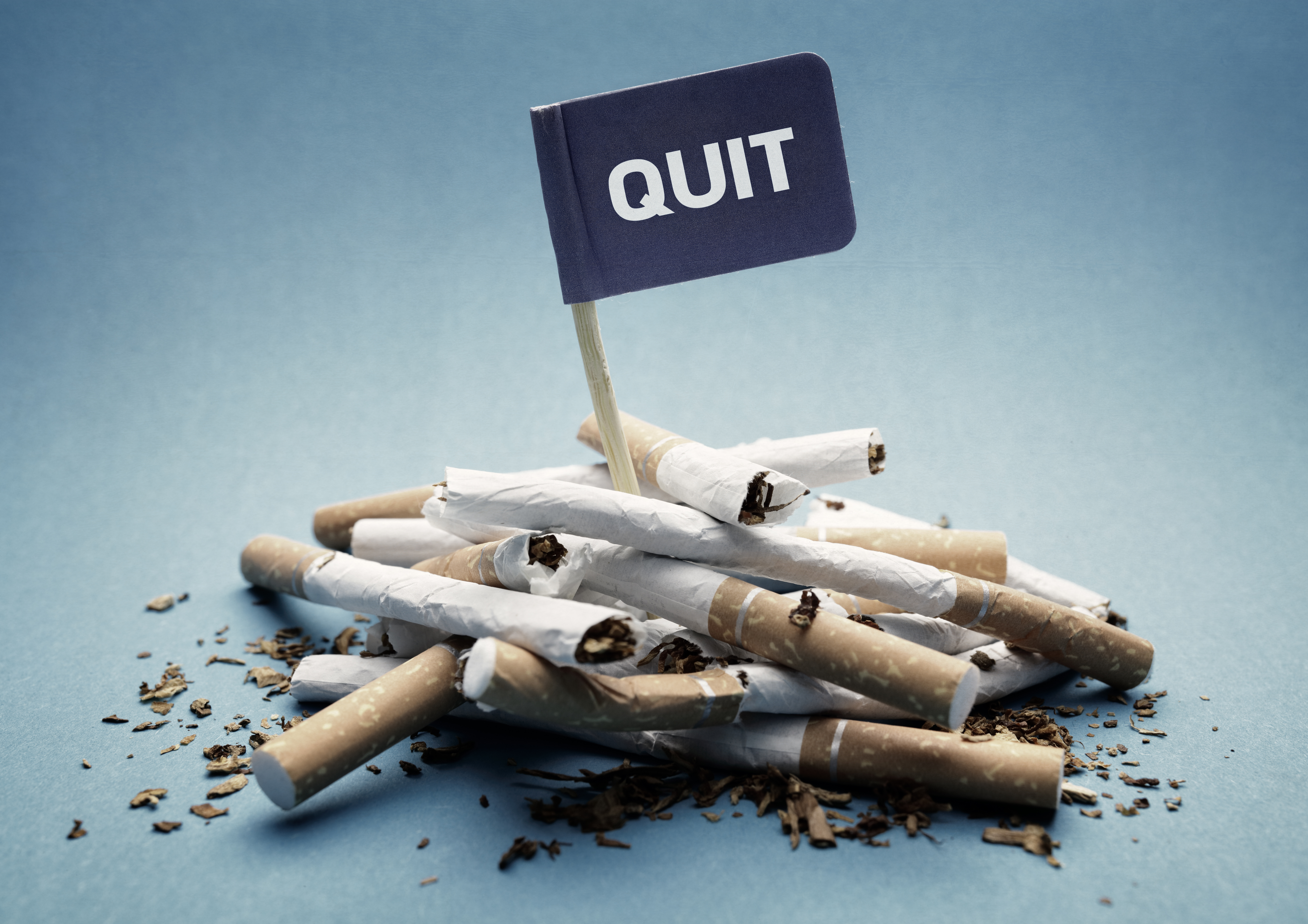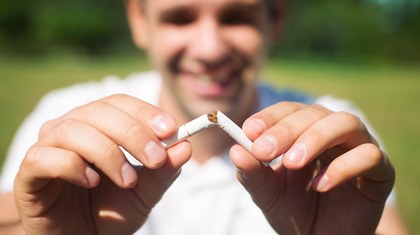
The Best Ways to Quit Smoking
There are approximately 16 million people who are living with at least one disease that’s caused by smoking.1 Smoking can lead to health issues, high overall financial costs, and a habit that can be tough to break. Keep reading to discover some of the most common ways to quit smoking so that you can take better control of your health and finances.
The Health Effects from Smoking
Smoking is when someone inhales or tastes a certain chemical after it’s been lit with fire. One of the most common things people smoke is tobacco.1 Tobacco is a plant that can be smoked, chewed, or sniffed.2 People can smoke tobacco through sources like cigarettes, cigars, bidis, kreteks, pipes, and hookahs.1,2,3
Tobacco contains an addictive chemical and drug known as nicotine.1 Some people might smoke tobacco because the nicotine gives them a temporary sense of well-being.2 Nicotine goes into your blood and stimulates the adrenal glands to release adrenaline into your body.3 This temporary adrenaline boost might give you a sense that you have more energy to complete daily tasks.2 Nicotine also stimulates the receptors in your brain that release dopamine. Dopamine is a brain chemical that makes you feel good and affects your mood, movement, memory and focus. This pleasurable response to dopamine contributes to nicotine addiction.
Although smoking tobacco can have temporary moments of helping you feel better, there are more negative health effects than positive ones. Smoking tobacco can lead to lung cancer, chronic bronchitis, emphysema, and chronic obstructive pulmonary disease.3,4 It can also increase the risk of you getting heart disease, having a heart attack, or having a stroke.3,4
Not only does smoking have terrible effects on your own health, but it can also negatively impact the health of your loved ones that you smoke around. Approximately 41,000 nonsmoking adults and 400 infants die each year because of health issues caused by secondhand smoke.4 Adults who suffer from secondhand smoke issues have an increased risk to experience strokes, lung cancer, and coronary heart disease.4 Children who suffer from secondhand smoke issues have an increased risk in experiencing sudden infant death syndrome, respiratory infections, middle ear disease, asthma, and slowed lung growth.4
What Is the Best Way to Quit Smoking?
Quitting your smoking habit can be tough, but it can also help keep your health and the health of your loved ones in better condition. There are some ways to stay on your quit smoking plan. Once you build a robust quit smoking plan using different methods, you’ll be right on your journey to end your smoking habit. You can go cold turkey by quitting all smoking immediately, or you can reduce how much you smoke time after time. While you’re doing that, there are methods you can use to help with your withdrawal symptoms. A few of these methods are:
Exercise
Exercising is a common way to distract yourself from tobacco cravings when you try to quit smoking.5 Even quick, low-energy amounts of exercise like walking or jogging can help weaken your tobacco cravings.5 Exercising can also help offset some of the negative health effects caused by smoking. Exercising regularly can help lessen your risks of experiencing strokes, high blood pressure, type 2 diabetes, and depression.6 It can give you a boost of energy throughout the day, and it can help you sleep better at night.6 Exercising stimulates brain chemicals that can help you feel happier, relaxed, and less anxious.6 If you are smoking because you think it helps you feel better, exercise can do that as well but in a long-term way that doesn’t damage your health.
Snack on Healthy Foods
Having healthy snacks available can help you with tobacco cravings and the urge to have oral activity. Keep fruits, vegetables, nuts, seeds, and air-popped popcorn with you so that you have a way to help those cravings without damaging your health.7 The nutrients from healthy foods can also help offset some of the health issues that smoking has caused you.
Nicotine Replacement Therapy
Nicotine replacement therapy is when you use products that contain very low amounts of nicotine until you’ve fully weaned yourself off of the drug.2 The products don’t contain the toxic ingredients that are found in tobacco products.2 Some forms of NRT are skin patches, nasal spray, lozenges, inhalers, and gum.2,8
Nicotine Gum
Nicotine gum can help ease the withdrawal symptoms you experience when you stop smoking.9 It’s a smoking cessation aid that works by providing a small amount of nicotine to your body.9 It also acts as a substitute oral activity to help reduce your urge to smoke.9 Nicotine gum can be an quick, great-tasting way to quickly help reduce nicotine cravings.8
Manage Stress Levels
You might smoke because it can temporarily relieve your stress. Quitting smoking can be difficult if you don’t have more effective ways to keep your stress at a minimal level. Practice breathing exercises, like meditation, to help with stress. It might also help to have someone to talk to who understands your struggles.10 Getting support from your friends and family, calling an expert hotline, and even speaking with a quit smoking counsellor to help you stay on track can help you quit smoking entirely.10
Keep Trying
Quitting anything that you’ve done for a while can be difficult. It’s important to stay positive and keep trying. Take the process one day at a time. One of the above methods might work great for one of your friends, and another method might work better for you instead. You can explore Nicorette products on a trial basis to see which one might work best to help you quit smoking.







